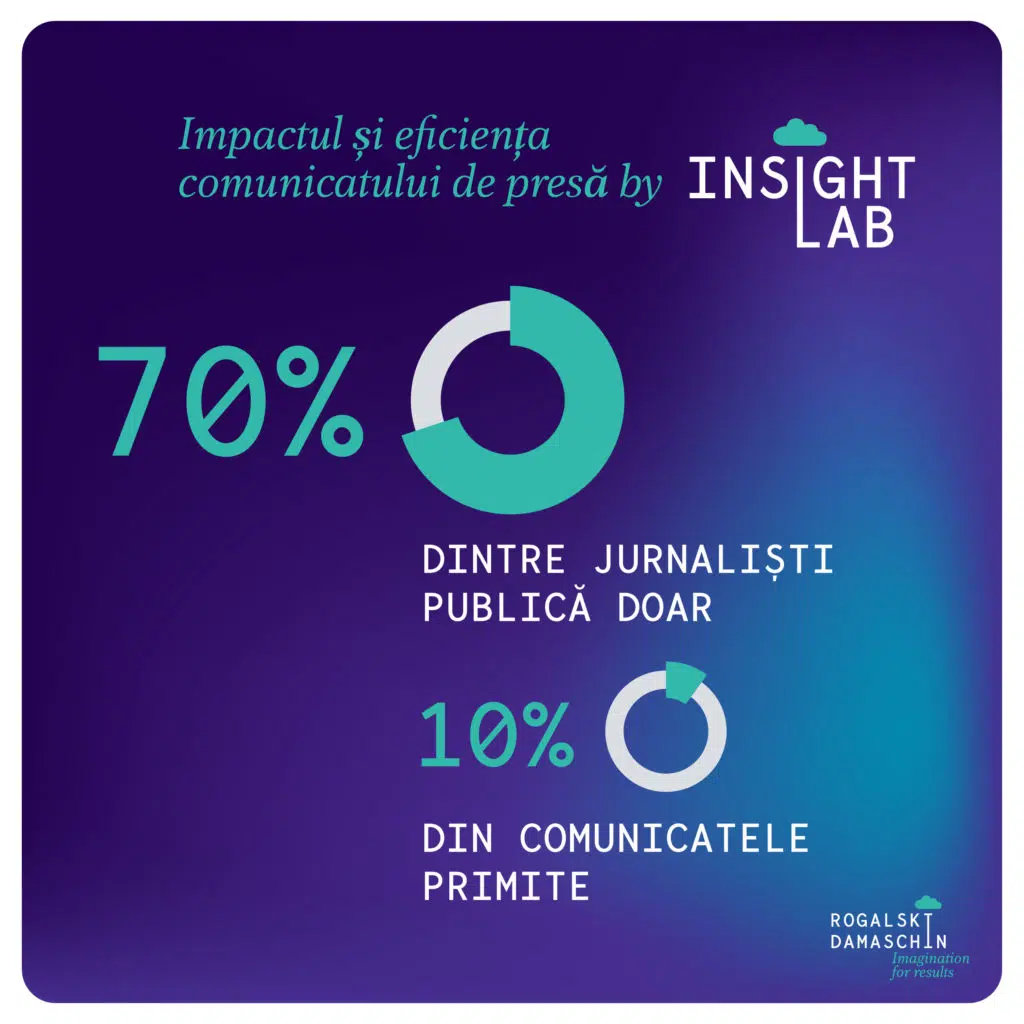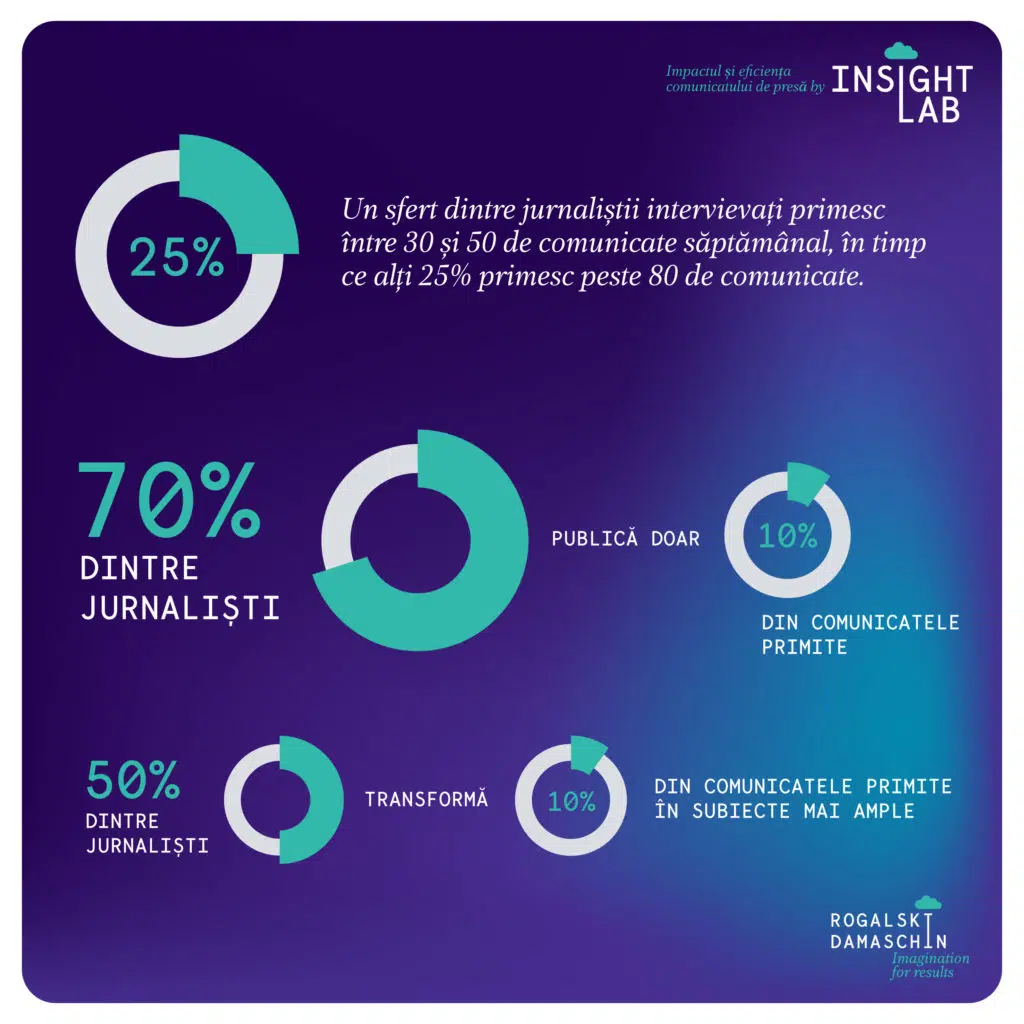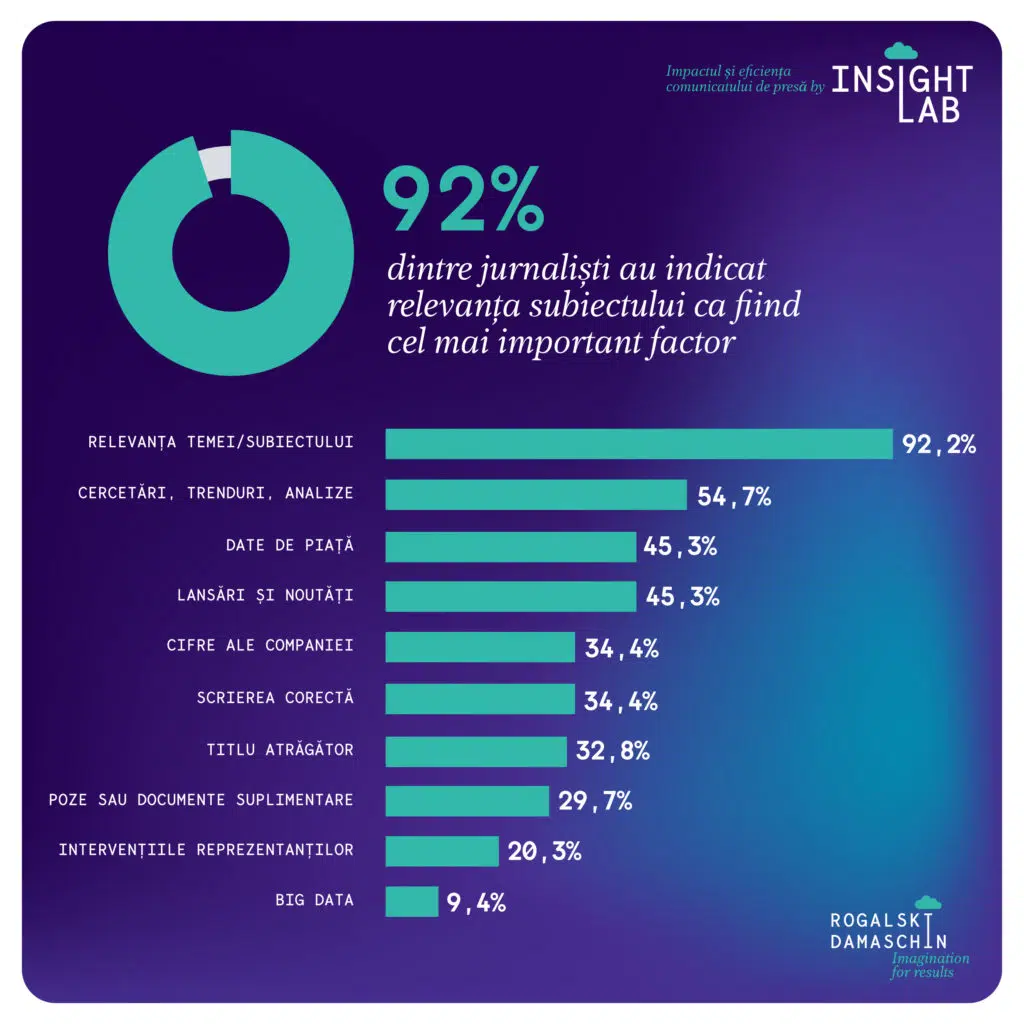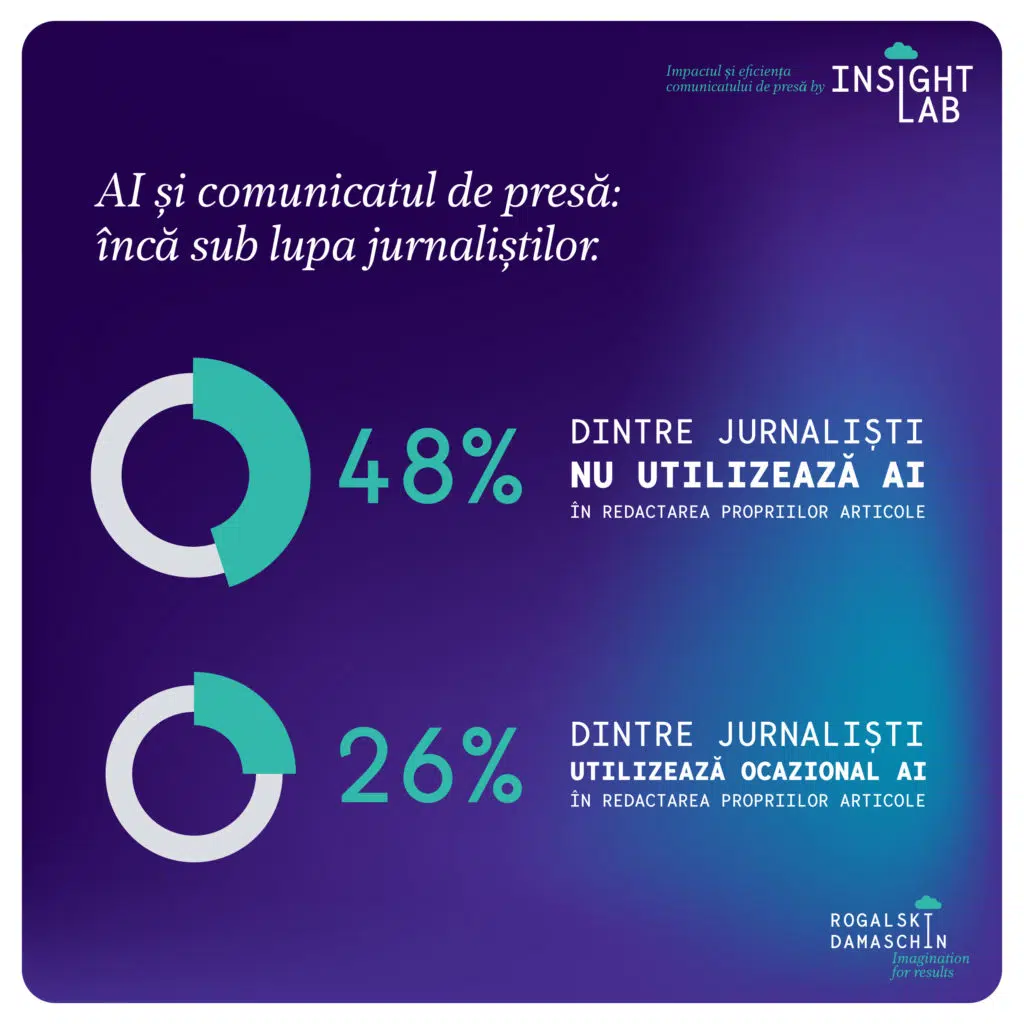
Press releases in the age of algorithms: only 10% become news
- According to a research conducted by Rogalski Damaschin in the Insight Lab program, 90% of the PR content generated by organizations does not meet the conditions to become press topics.
- 70% of journalists use only 10% of incoming communications
- The relevant topic and well-documented figures are essential so that the information provided by companies can be developed in impactful press materials.
- The role of the media — through its information verification mechanisms — must remain fundamental, especially amid the excessive algorithmization of content on social media.
- The survey had 64 respondents from TV, radio, print and online press, economic & financial press, news, generalist press, lifestyle and tech at national level.
How can brands increase their chances of a press release being picked up in the media? In the age of algorithms, 90% of the press releases generated by organizations in Romania remain unpublished, according to a research conducted by Rogalski Damaschin.
The study took place between September and November 2024. The approach is part of the Insight Lab platform, designed to support organizations to adapt their public communication to the transformations of the media industry.
New technologies influence all activities in the press — from documentation and editing, to publishing and amplification — and the Insight Lab provides resources to cope with these changes.
“The context and conclusions of this research, conducted before the 2024 elections, confirm that there has been increasing pressure on organizations to remain transparent and relevant to the public in the face of excessive algorithmization of information.
In the last 2 weeks of the election campaign, there were many voices in the public space questioning the most important results of the economic growth of recent years. Thus, there is the question of the real impact that communication in the business environment has on society.
The results of this research show that companies' efforts to communicate their values, results and decisions must evolve to adapt to the needs of media partners.”explained Eliza Rogalski, Head of Reputation Strategy.
How relevant are press releases in the age of artificial intelligence?
The first topic in the Insight Lab was measuring the relevance of the press release in a period marked by artificial intelligence (AI). Although the press release remains an essential tool in relationship with the media, only a small percentage of the publications end up generating editorial content.
The study shows that in order to increase the chances of publication, communications must:
- be well documented
- be clear
- be relevant to the public
- to include information with as much amplification factor as possible in social media.
More than 80 press releases received weekly in a newsroom
Research has revealed a phenomenon of saturation of editorials. A quarter of the journalists interviewed reported receiving between 30 and 50 communications a week, while another 25% received more than 80 communications.
However, almost 70% of journalists claimed to use only 10% of press releases to develop editorial content.
How a press release becomes public interest news in the age of algorithms
Asked about what types of messages can generate news or other press materials, 92% of journalists indicated the relevance of the topic to readers as the most important criterion.
In second place are the concrete data and figures in the press releases, mentioned by 80% of the respondents. It is about:
- market studies
- economic analysis
- sociological research
- information about consumer behavior extracted from social platforms or e-commerce.
At the same time, product launches and market news were considered valuable for increasing interest in a release.
In addition, the format of a communication plays an essential role in the editorial selection process:
- about 34% of journalists mentioned that grammatically correct writing is crucial
- 32% stressed the importance of a well-worded title that would attract immediate attention.
Press releases that meet as much of these criteria as possible are more likely to generate organic content in the media.
AI and the press release: under the magnifying glass of journalists
The survey also explored the perception of the use of artificial intelligence in drafting communications.
Most respondents did not notice excessive use of AI in incoming communications. However, those who identified such texts noted the need for further edits.
In addition, 48% of journalists do not use AI in writing their own articles, and 26% do so only occasionally.

Verification from three sources, a still solid practice, according to the study on the relevance of press releases
Although the journalistic landscape has evolved and is under pressure to generate as much content as possible in the shortest possible time, verifying information remains a basic rule.
Nearly 60% of respondents said they check information from at least three sources, depending on the type of information or content. This standard ensures the accuracy and credibility of the news.
Why doesn't a press release become news?
Among the main reasons why a press release does not become news, journalists noted:
- lack of relevance to their audience
- excessive advertising content.
Texts that promote products or services in an obviously commercial way are classified as advertorials and cannot be classified in any category of public interest.
Moreover, the poverty of public interest information and the artificial and cumbersome language make it difficult to turn many press releases into publishable materials.
Other reasons cited by journalists are:
- Subjects of low importance
- lack of visual resources
- incomplete information.
How to Create Impactful Press Releases in the Age of Algorithms
Ideal press releases must be concise, clear and correctly written to be turned into journalistic materials, respondents say.
It is essential that they attract attention through a strong “hook” — an information or statement that can support the amplification of content organically on social media.
Journalists recommend avoiding corporate language and laudatory exaggerations. Communications must also include editable formats and easy-to-use images.
Successful communications provide useful data and information for journalists to develop, in turn, public interest narratives.
The survey conducted by Rogalski Damaschin shows that although the communication environment is saturated with information, press releases remain an important tool for journalists.
Recent developments during the election campaign show that the role of the press — by verifying information, filtering topics and developing public narratives — remains essential. This is all the more important in the context of excessive algorithmization of content on social media.
In this landscape, organizations have a responsibility to adapt their public discourse to increase their impact and credibility.
Frequently asked questions about the effectiveness of press releases
- How can press releases contribute to a brand's reputation?
Well-made communications build credibility and trust in front of the public and journalists. They show professionalism, transparency and the ability of the brand to coherently communicate its values and results. - What are the benefits of providing additional media resources alongside the communication?
Images, editable files and links to studies or additional data facilitate the work of journalists and increase the likelihood that a release will generate quality editorial content. - How can organizations identify which topics will be relevant to the press?
Monitoring social media trends, analyzing recent articles, and engaging with journalists helps identify topics that can generate editorial interest and impact. - Can artificial intelligence ensure the drafting of a press release?
AI can support drafting by generating drafts or extracting relevant data, but human intervention is essential for clarity, context and authenticity.










